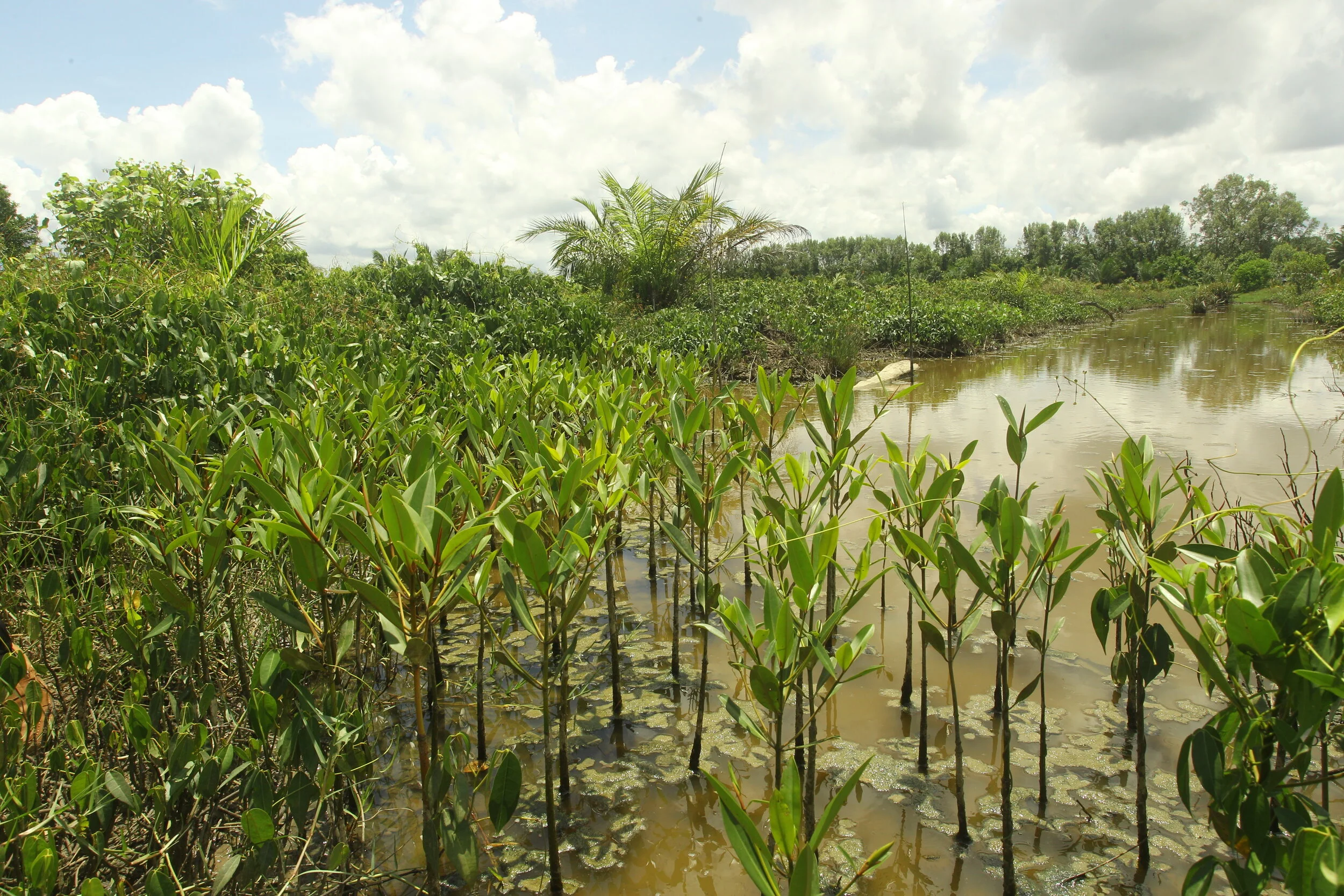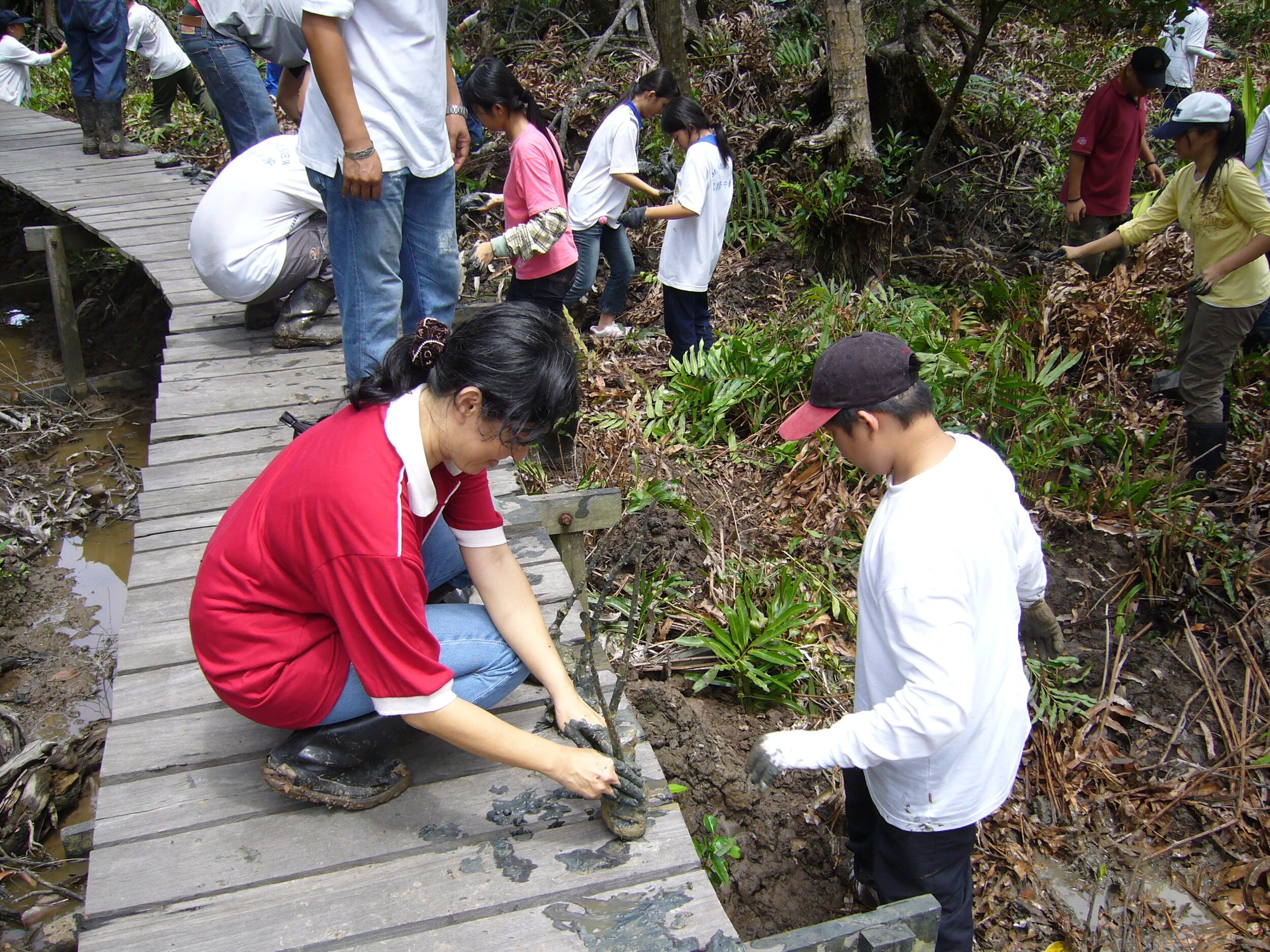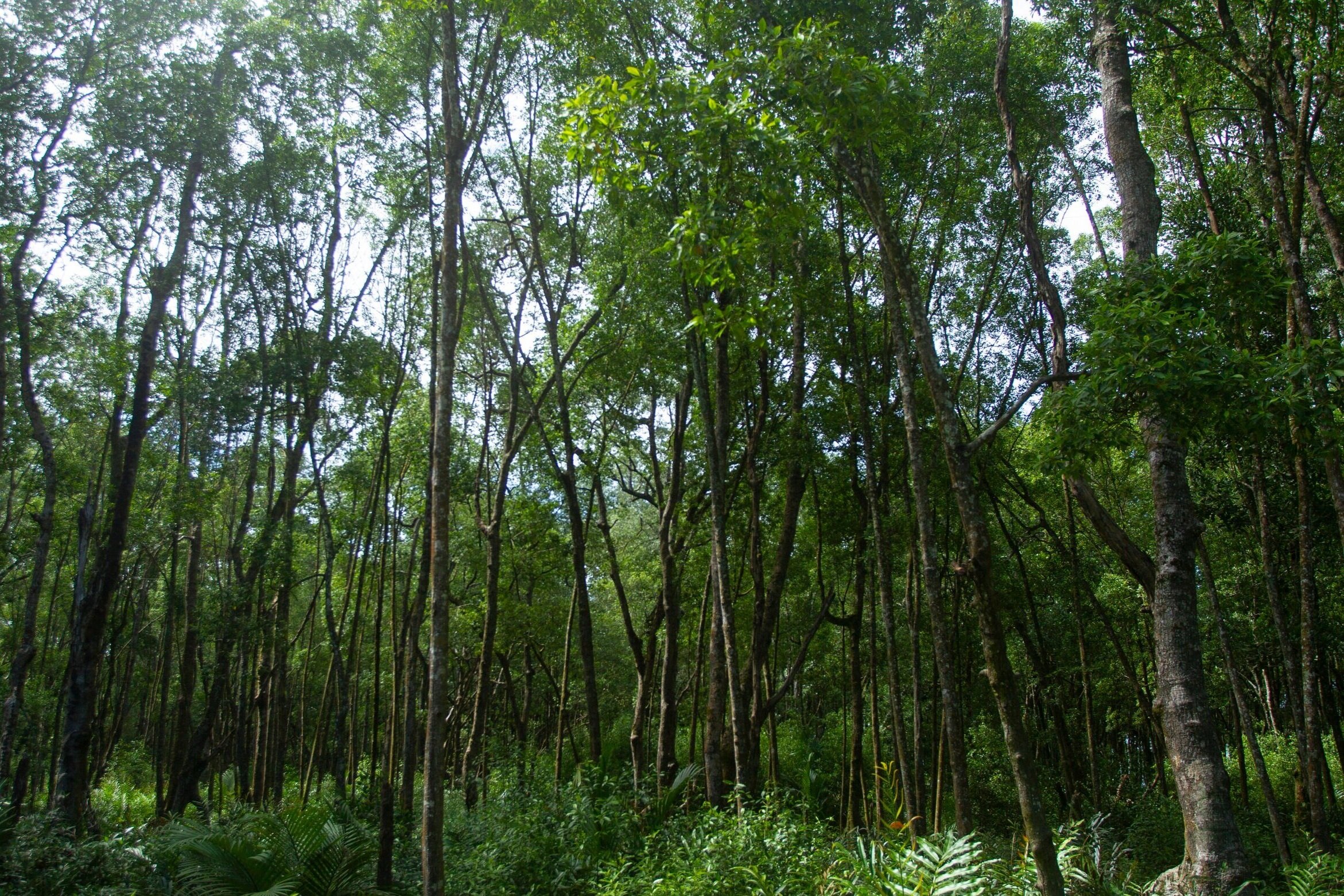
More than 50,000 trees replanted in 550 acres of protected mangrove forest
While the initial drive of setting up Labuk Bay is to protect the proboscis monkeys, it was apparent that without a forest left for the monkeys to call home, any conservation efforts would be futile.
The sanctuary lies on coastal mangrove forest, and parts of it were unfortunately badly degraded back in the late 90s due to logging by nearby villagers, and land encroachment by unscrupulous oil palm estate operators in the region. To date, there have been two major replanting operations in 2004 and 2008 carried out within the vicinity of Labuk Bay, and multiple smaller scale operations to replant small scattered patches of deforested areas.
Our conservations efforts continue.
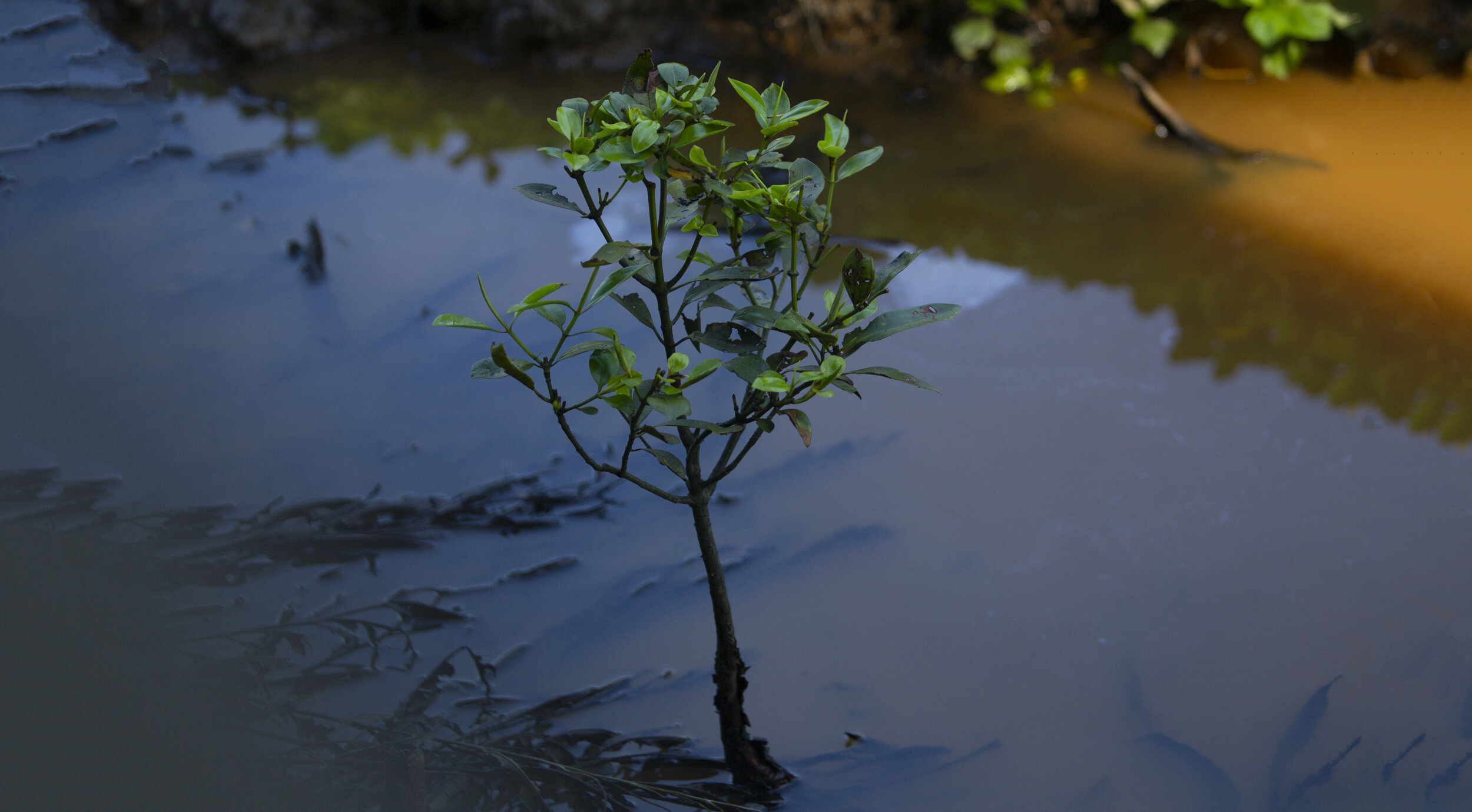
Making a Last Stand
Replanting Initiatives
SFD-ISME Replanting Project (Sept 2021)
In early 2020, Labuk Bay managed to acquire a 43-acre plot of an abandoned oil palm plantation at its eastern border. While we were expecting to fund the replanting efforts via visitor revenues, the 2020 COVID-19 pandemic has put a monkey wrench into our plans.
Despite, the challenges posed by the pandemic, we had managed to replant the area by collaborating with Sabah Forestry Department (SFD) and International Society for Mangrove Ecosystems (ISME), more than 35,000 saplings have been replanted in the abandoned oil palm plantation.
Labuk Bay will be working together with SFD to monitor the status of the rehabilitation site. An information center for future visitors who wish to learn more about mangrove rehabilitation is currently being established.
SFD Replanting 2008
Located at the western edge of the sanctuary, mangrove trees growing by the shore edges were harvested by villagers living in upstream Kg. Samawang. Bringing in machinery to clear the land and repopulate it with the desired species proved to be difficult. Coastal erosion caused by the loss of mature coastal trees further intensified the degradation of the forest, with large amounts of washed-up silt and clay covering up shorter growths.
Labuk Bay collaborated with Sabah Forestry Department (SFD) under the guidance of Dr. Jospeh Tangah to replant an area of approximately 11 acres with 3000 mangrove tree seedlings such as Rhizophora apiculata (Bakau Minyak) and Ceriops tagal (Indian Mangrove). The challenges brought on by coastal erosion persist to this day, as satellite images show that vegetation growth on the coast remains sparse.
Kayu Ara Site Replanting 2004
Labuk Bay initially built two feeding platforms for the proboscis monkey population in the late 1990s. This was because the population was then divided by a 10-acre patch of deforested land.
Reconnecting the two stretches of mangrove forest hence became an early priority for our replanting efforts. We chose to replant the area primarily with Ficus microcarpa (Malayan Banyan) and Rhizophora apiculata (Bakau Minyak), two important natural food sources for the wildlife population within the sanctuary.
As of 2020, the replanting site has been completely replenished and the two populations of proboscis monkey that were formerly separated have been observed to migrate between the two feeding platforms regularly.
Community Replanting Efforts
Since opening to the public in 2000, Labuk Bay has played an active role in educating local communities about the importance of mangrove forests towards the ecosystem and the wonders of the wildlife that it holds.
The sanctuary has played host to multiple school camps, and organizations outings over the years. One key programme we offer would include a seminar about the mangrove forests, followed by participants collecting mangrove seed pods at healthy parts of the forest and replanting them at degraded parts.
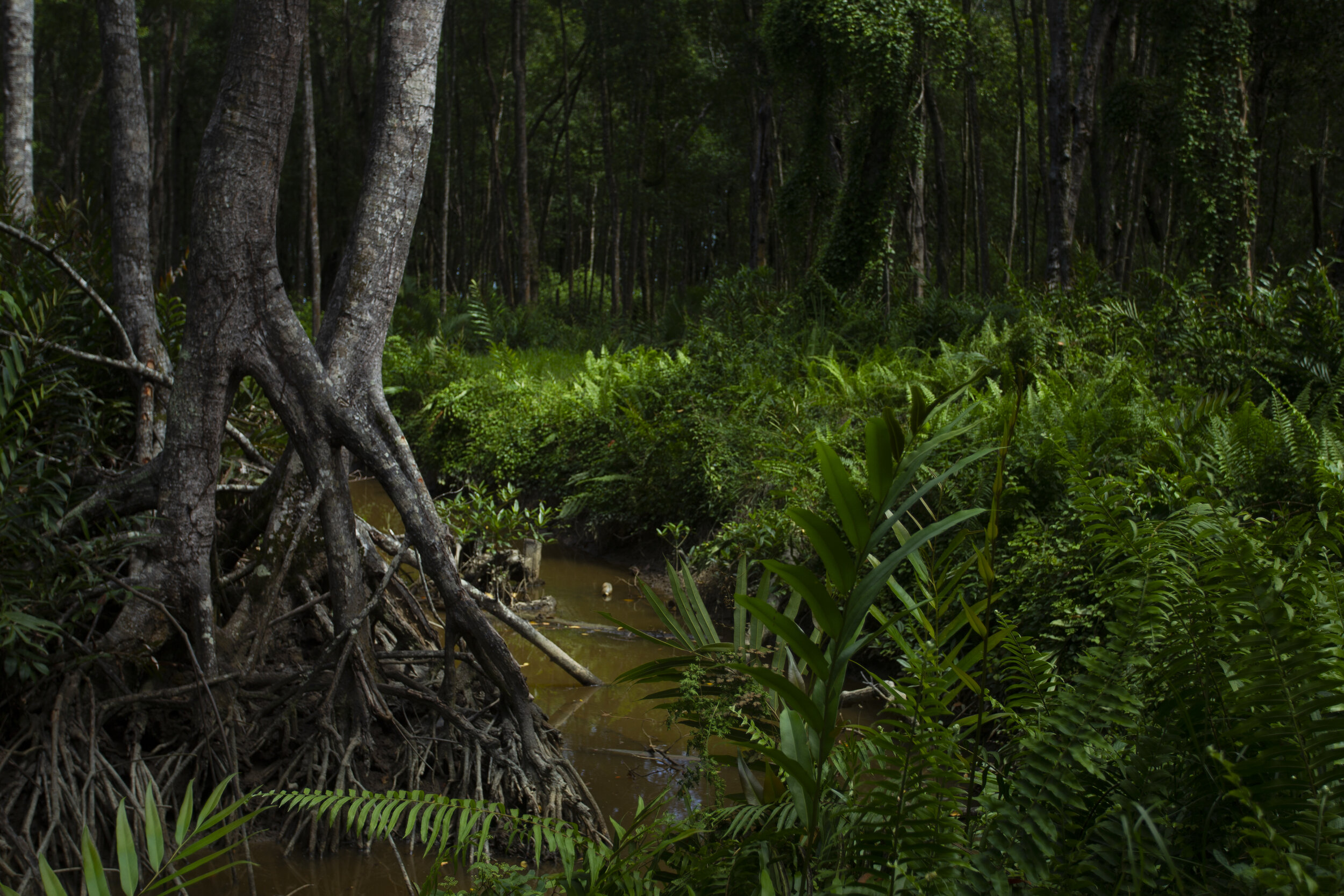
Scientific Research and Studies
The unique opportunity to observe the typically elusive proboscis monkeys up-close have attracted researchers world-wide to conduct research at Labuk Bay. Some highlights include the observation of proboscis monkeys regurgitating and eating curd (Documentary footage 2002), female proboscis monkeys sharing nursing duties, and mourning behavior from the mother when her infant passes away.
This unique situation in Labuk Bay where proboscis monkeys are thriving in a human-managed mangrove forest provides valuable insight on how isolated populations of proboscis monkeys can be managed.
List of scientific publications:
Population Genetics analyses of the endangered proboscis monkey from Malaysian Borneo.
N. Mazlan, MR Abd-Rahman, RCT Tingga, Folia, 2019.Fecal Parasite risk in the endangered Proboscis Monkey is higher in the anthropogenically managed forest environment compared to a riparian forest in Sabah, Borneo.
A. Klaus, C. Stube, M. Roper, U. Radespiel, F. Schaarschmidt, S. Nathan. Et al. PLOS One, 2018.First report of foregut microbial community in proboscis monkeys: are diverse forests a reservoir for diverse microbiomes?
I. Matusda, T. Hayakwa, et al. Environmental Microbiology Reports 2018, 10, 655.The ecology and behavior of Proboscis Monkey (Nasalis larvatus) in mangrove habitat of Labuk Bay, Sabah.
J. Tangah, PhD Thesis, 2012Mounting behavior of Proboscis Monkey in semi-wild mangrove habitat of Labuk Bay, Sandakan, Sabah.
J. Tangah, Poster Presentation, 2011, ITBC Postgraduate SymposiumGenetic Diversity and Distinctiveness of the Proboscis Monkey (Nasalis larvatus) of Kilas Penisula, Sabah, Malaysia.
J-Munshi South, H. Bernard, Journal of Heredity, 2011.Feeding behavior of Proboscis Monkey (Nasalis larvatus) in semi-wild mangrove habitat of Labuk Bay, Sandakan, Sabah.
J.Tangah, Henry Bernard, Poster Presentation, 2010, 23rd Congress of the International Primatological Society, Quest for co-existence with non-human primates.Borneo’s Proboscis Monkey—a study of its diet and phytochemical concentrations.
G. Agoramoorthy, MJ Hsu, Current Science, 2005.Occurrence of Infanticide among wild proboscis monkey (Nasalis larvatus) in Sabah, Northern Borneo.
G. Agoramoorthy, MJ Hsu, Folia Primatologica, 2005, 76, 177.


